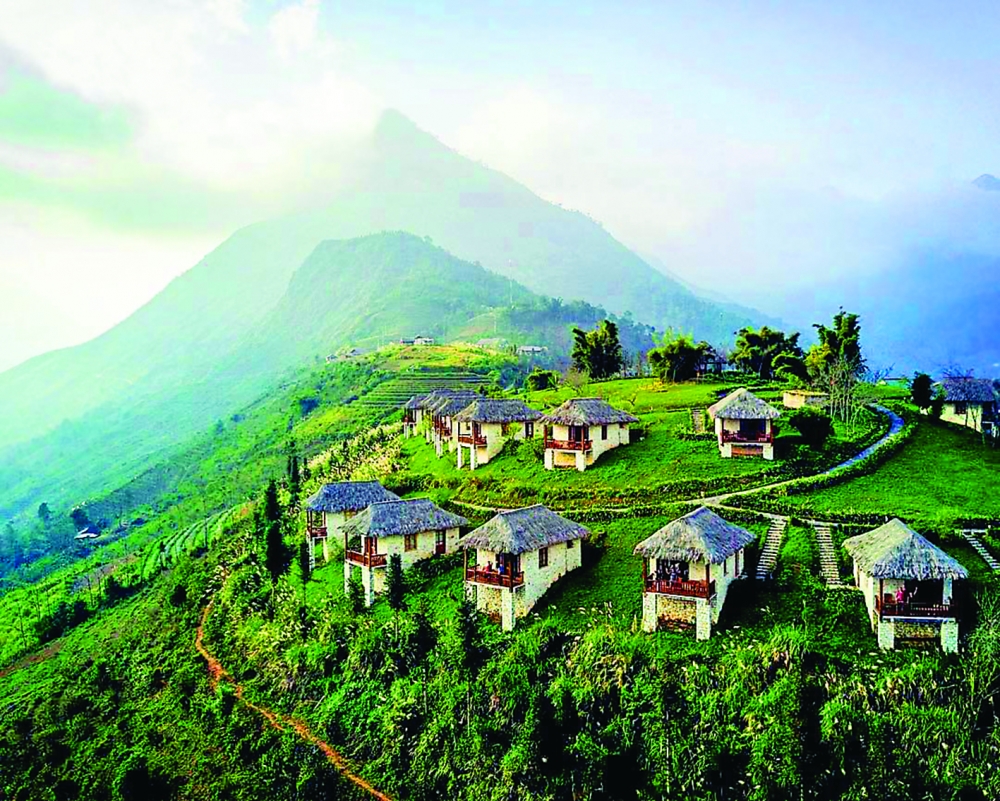

14/12/2022
Defined to become a key economic sector, Việt Nam’s tourism industry depends much on the natural environment. Therefore, for sustainable development of tourism, it is inevitably to follow the direction of green tourism.
The World Tourism Organization (UNWTO) considers Southeast Asia the 4th largest international tourist attraction in the world and Việt Nam is one of the 10 countries with the fastest tourism growth. Việt Nam is a country with great potential in developing green tourism with rich and diverse resources, many beautiful landscapes and historical sites.
In line with the global trend, Việt Nam’s tourism industry has identified green tourism and sustainable tourism on the basis of green tourism as a development path in the next ten years.

Topas Ecolodge Resort (near the Northern Town of Sa Pa, Lào Cai Province) as one of the world’s 10 greenest resorts
Sustainable, not temporary growth
Defined to become a key economic sector, Việt Nam’s tourism industry depends heavily on the natural environment. Therefore, for the sustainable development of tourism, it is inevitable to follow the direction of green tourism. Việt Nam is one of the 10 countries with the longest coast compared to the total country’s territory at 3,260km and also a country with 2,360 large and small rivers. A bottle of water thrown into a river in remote mountainous provinces like Điện Biên, Lai Châu, Hà Giang on the Northern border, or Đắk Lắk, Kon Tum in the Central Highlands, might eventually drift out into the sea. All plastic waste in one way or another "finds its way" into the river and then floats out into the ocean. Therefore, each of citizen is not innocent in this story. To have a green and safe travel environment, practical action must be taken now.
Over the past few years, Việt Nam’s tourism sector has made breakthrough developments which, according to experts in the Việt Nam Annual Tourism Report 2018, increased the number of international visitors by 22.9 percent (while the world average is 5 - 6 percent). This is a very high growth rate, making Việt Nam a "hot spot" for global tourism. When becoming an attractive destination, the tourism industry immediately faces the fast development of the system of hotels, restaurants, and entertainment sites.
Time to treat the environment well
Green tourism is a type of tourism that operates in a way that minimizes the impact on the environment, making a positive contribution to biodiversity protection, using renewable energy and promoting natural and cultural heritage and developing environmentally friendly products.
Since 2017, there have been kayaking tours combined with waste collection on the Hoài River introduced by Hội An Kayak Tourism Company in Hội An Town (Quảng Nam Province). The tour costs around US$ 10 for a person, with four hours of sightseeing and waste collection. Many domestic and international tourists initially joined in curiosity and were really excited. This meaningful activity also gradually attracts a large number of locals to take out the trash with tourists.
Hội An is also one of the pioneering localities in reducing plastic waste and building a friendly tourism environment. Sapo Hội An restaurant in the past five years has converted about 300 liters of used cooking oil to turn into kitchen soap, instead of discharging it directly into the environment.
Tourists are being asked not to bring plastic bottles, bags and other single-use plastic items when visiting Cô Tô Island District in the Northern Province of Quảng Ninh. The move will be piloted for three to six months before local authorities consider the official imposition of a ban on plastic use in efforts to boost sustainable tourism development.
Indigenous culture - Future of green tourism
Today, travelers tend to be more concerned about the quality of the destination. Guests will stay longer if the destination has many interesting experiencing activities. The trend of cruises has changed in recent years to resorts in the mountains, to experience local culture.
New-generation tourists are environment-loving, respectful and environmentally responsible people, so the trend of finding unique cultural and ecological values is also becoming prevalent. With eco-friendly and close-to-nature destinations, people find their way back to their roots and culture.
The trips of these people have created a new trend for green and environmentally friendly tourism. This requires local Governments and businesses to keep up with that direction in developing green tourism.
Trần Tân
(Nguồn: Bài đăng trên Tạp chí Môi trường số Chuyên đề Tiếng Anh IV/2022)